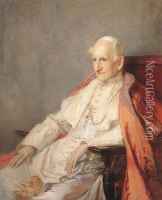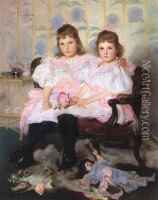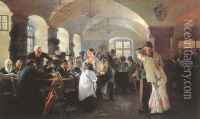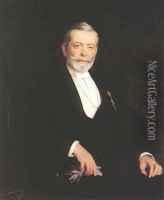Fulop Elek Laszlo Paintings
Fülöp Elek László was a Hungarian painter, renowned for his portraits and historical paintings. Born on October 18, 1869, in Bácsalmás, Hungary, László went on to study painting under the guidance of prominent artists. He began his education in art at the National Hungarian Royal Drawing School, where he was a student of Gyula Benczúr, a historical painter who had a significant influence on his early development. László later continued his studies abroad, which was a common practice for many European artists seeking to refine their skills and gain exposure to different artistic movements.
László's work was characterized by a refined technique and a strong emphasis on realism, a popular style during his time. His portraits were particularly noted for their lifelike quality and attention to detail, which earned him commissions from various high-profile individuals, including nobility and members of the upper classes. He worked mostly in oil on canvas, and his historical pieces often depicted grand, romanticized scenes from Hungarian history, reflecting a national pride that was common in the arts of the Austro-Hungarian Empire era.
Throughout his career, László's art was well-received, and he became one of the leading portraitists in Hungary. His works were exhibited in numerous galleries and won him accolades, contributing to his reputation as a significant figure in Hungarian art history. Despite the popularity of his portraits, László did not limit himself to this genre and also experimented with different subjects, including landscapes and genre scenes. However, it is his portraits that have had the most enduring impact and for which he is best remembered today.
Fülöp Elek László passed away on March 22, 1937, in Budapest, Hungary. His legacy lives on through his artworks, which continue to be appreciated for their technical mastery and historical value. His paintings can be found in various art collections and museums, serving as a testament to his skill and his contribution to the Hungarian art scene of his time.



